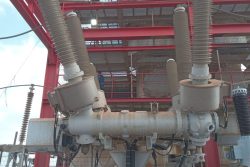Last week I listed the 12 different pillars on which the Global Competitiveness Index is based. These pillars are complex, dynamic, multi-dimensional, and self-reinforcing. Although listed separately, they are deeply intertwined with each other. The next phase of analysis of the model utilised by the World Economic Forum (WEF) in its preparation of the index is to differentiate countries in terms of their “stages of development.” This is necessary as the questionnaires utilized in the Executive Opinion Survey are uniform for all countries, but they have to be evaluated differently for each country, as countries differ in the effects of different issues raised in the questionnaires on them.
The WEF identifies three definite and two transitional stages of development. These are based on the work of the Harvard economist Michael Porter, who has pioneered national competitiveness studies. Stage 1 is the “factor-driven stage” of development. Here, countries compete basically on their factor endowments, which are biased in favour of their natural resources and relatively cheap labour. The competition from such countries is usually expressed in price and product availability. Wages are low at this stage as productivity is low, hence the low per capita GDP as well. Countries with less than US$2,000 per capita GDP are assumed to be at this stage of development.
Stage 2 is the “efficiency-driven stage.” Here countries with GDP per capita ranging from US$3,000-US$9,000 are situated. The higher per capita GDP reflects higher wages and higher productivity. At this stage of development, product quality and efficient production and distribution processes are the primary bases of competition. In between US$2,000 and US$3,000 one finds the first transitional stage (between Stages 1 and 2).
Stage 3 is the “innovation-driven stage.” This is the highest stage. Here countries with per capita GDP greater than US$17,000 are located. At this stage of development wages and productivity rise sustainably with increasing per capita GDP. Competition is based on innovating new products and new services. Competition is not now based only on price and efficient processes but encompasses continuous innovation of “new” products and services. In between US$9,000 and US$17,000 there is the second transitional stage.
These Stages of Development are summarised in the schedule below.
In the next stage of the analysis the 12 pillars of competitiveness are broken down into three convenient categories, which are then related to the three stages of development. The first of these categories is basic requirements, which include institutions, infrastructure, macroeconomic stability, health, and primary education. These are therefore the key pillars for factor-driven economies (Stage 1). The second category is efficiency enhancers, which include higher education and training, goods market efficiency, labour market efficiency, financial market efficiency, technological readiness and market size as the key pillars for efficiency-driven economies (Stage 2). The two remaining pillars of competitiveness, namely, business sophistication and innovation are described as innovation and sophistication factors and these are the key pillars for the innovation-driven economies (Stage 3).
The stages of development as they relate to the pillars of competitiveness are shown in the simple schedule below.
The 12 Pillars of Competitiveness and Stages of Development
The last issue that readers need to be aware of is how the WEF “weights” the influence of these different pillars to the different stages of development. Clearly this is necessary, as for example, a pillar like health and basic education would have a greater impact on competitiveness in poor economies, where these are lacking, than they would in their richer counterparts. The weights are estimated from cross-country statistical and economic analyses and are shown in the schedule below:
Weights of the Three Main Groups of Pillars at Each Stage of Development
The Index is calculated on a scale of 1-7 and countries are also ranked, based on the total number of countries successfully surveyed.
Conclusion
In conclusion, readers should observe a couple of considerations. First they may fairly ask the question: are the transitional stages between the three stages of development a smooth or irregular process? The WEF posits a smooth process, but to my mind this is highly contentious. Second, are the income determinants of the thresholds between stages of development reliable? As a broad generalization based on econometric tests and sensitivity analysis for a large number of countries, the WEF reports that the formulation stands up. But in real life situations, this would be difficult to justify in every case. Indeed, the WEF qualifies this income yardstick by reference also to the share of primary products in a country’s exports. This too, however, is not foolproof. Consider in this regard Canada, Brazil, Australia, and Russia.
Next week I shall examine the 2007-2008 Report for Guyana and Caricom.






